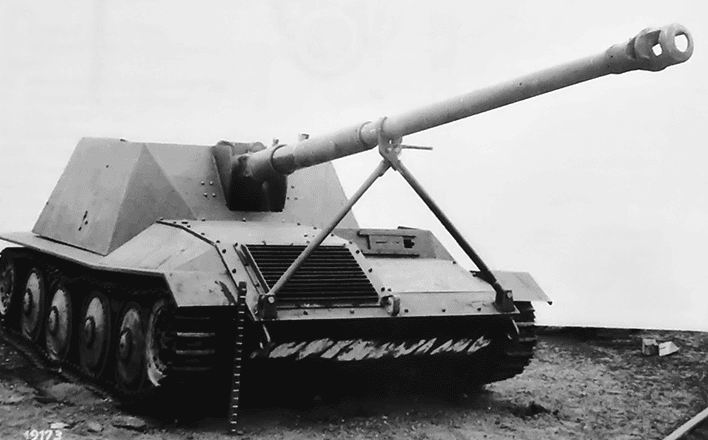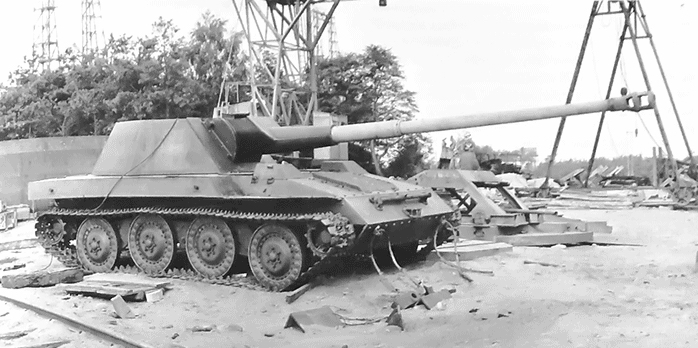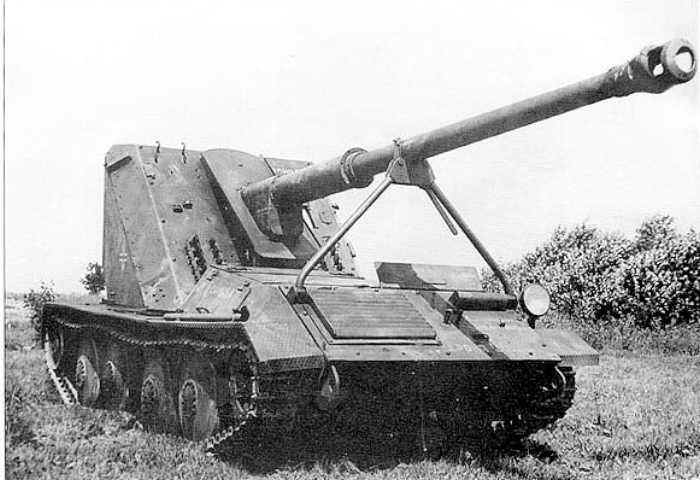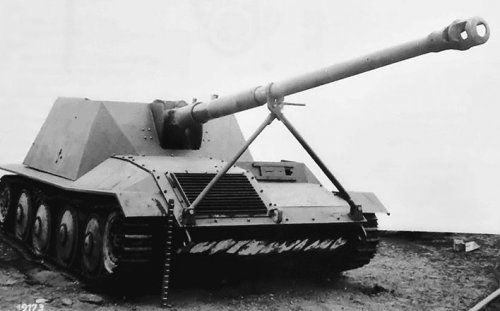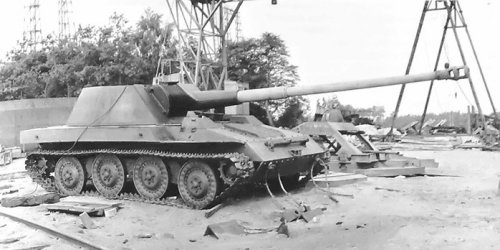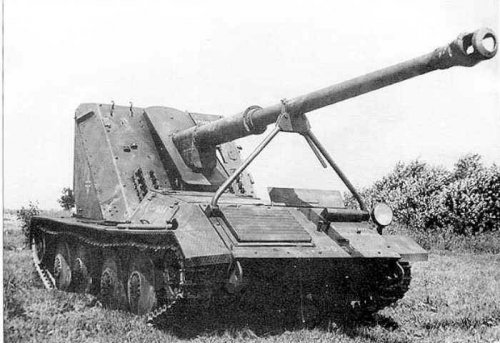"Waffenträger" in German means "weapons carrier" - and that's exactly what the Waffenträgers were. If we skip all the improvised weapons carries, made either from captured or German knocked-out tech, the idea to make an unified mass-produced weapons carriers came to be in early 1944. In January 1944, a conference took place between the members of the army and the industry representatives. The army complained that the PaK 42 and PaK 43 cannons were simply way too heavy to manhandle and impossible to tow without special artillery tractors. It was a reasonable complaint - Doyle mentions one incident, when brand new 88mm PaK 43 cannons had to be destroyed without firing a single shot in order to prevent them from falling to the enemy - just because there were no towing vehicles available. Thus a decision was made to mount all the heavy anti-tank guns on a simple, effective and cheap 38t platform, designated as "Einheitsfahrgestell", or "unified platform". Hitler personally started messing around too, ordering the abovementioned decision thru one of his directives and so the Waffenträger concept was born.
The first one to react to this new demand was Ardelt. Its 88mm PaK 43 Waffenträger proposal was made in two versions: one lighter, practically without any protection weighting 10 tons, one protecting the crew at least from small arms fire, weighting 13 tons, having a fully revolving turret. Versions for 75mm PaK 42, 105mm leFH 18/40 and 88mm PaK 43 (L/71) were concieved. This design (with two 1:10 models) was presented to Hitler in late January - Hitler, after seeing it, decided to go straight for the 88mm version, using the "Kreuzlafette" (cross mount). The vehicle was to be equipped with the L/71 gun with 50 rounds of ammo, with depression/elevation of -8/+45 degrees. The gun for the Ardelt project was to be modified by Rheinmetall Borsig. The armor was cca 20mm thick and the maximum speed in terrain was to be cca 30 km/h. This is how it looked:
The prototype (although not fully functional) was ready in April 1944 - it was tested and the tests were reasonably successful (no major breakdowns). The WaPrüf officials were very positive about the vehicle - the only issue being the gun mount, which was not ideal (Ardelt would later move to the Krupp mount). This project was actually still noted as active in September 1944, but at some point after that, it was cancelled due to the low resources.
Another, competing platform would be created by Steyr. Carrying the same weapon and having nearly the same characteristics, its PaK 43 gun mount was modified by Krupp. The vehicle was again using the 38t platform and was to be propelled by the V12 "boxer" Steyr enging (140hp), but that engine was not yet available and so the Praga EPA AC/2 180hp engine was used instead. Maybach HL and Klocker-Deutz diesel engine was also considered. From this point, the pieces of information are a bit sketchy. At least one prototype was made (and captured by the Allies) - it was scheduled to be read around October 1944. At some point after that, the program was stopped. This is how it looked:
The third Waffenträger was built in cooperation of Krupp and Ardelt. A modified platform from the original Ardelt vehicle was used. The vehicle had once again a fully revolving turret with the 88mm PaK 43 cannon. The elevation was -8/+25 this time and the gun had 42 pieces of ammo (6 in the ready rack on the side of the turret. Two prototypes were made until the end of 1944 (2nd prototype was ready on 23.9.1944) - further 7 serial vehicles were also produced. This was probably the only Waffenträger ever to see live combat. All 7 vehicles were attached to Panzerjäger-Alarmkompanie Eberswalde, commanded by Oberleutnant Ardelt (he died fighting on the vehicle). The unit fought near Eberswalde, roughly 50km northeast from Berlin, where it was defeated. One of these vehicles was then brought to Russia, tested in 1946 and remains in Kubinka to this day. This is how it looked:

